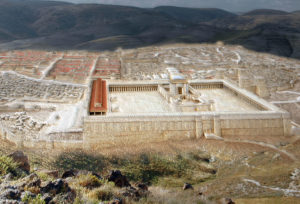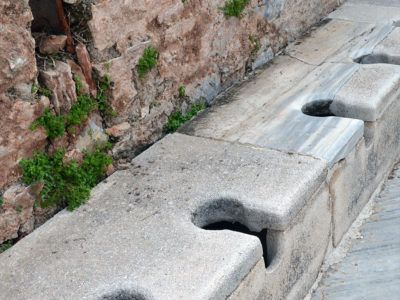ONE OF THE CHURCHES I attended as a child got sold and turned into a bar. Then later, worse, a used-car dealership.
Locals who would get a drink at the bar would later choke at the used-car lot.
Archaeologists in Israel have discovered that the same kind of thing happened to some of the ancient Jewish worship centers.
Sanctuaries were turned into public toilets.
Archaeologists found near the Holy of Holies ruins of holes not so holy.
They found sit-down toilets.
King Hezekiah put them there, some archaeologists speculate. It’s an educated guess.
Now that sounds odd, and it might leave some of us wondering how much money archaeologists lose when they play roulette at the casino. Why would anyone guess that Hezekiah, revered as the most godly king in Israel’s history, would put toilets at the holiest place in worship centers devoted to God?
That would be a bit like a Southern Baptist district superintendent tearing out the altars of churches he didn’t like, and putting in porta potties—front and center—to shut the preachers up.
Initially, this might sound like a wonderful idea to some district superintendents I’ve known. But it would pass.
Fact is, Jews were supposed to practice their worship rituals in just one place: Jerusalem. That’s where the Bible says God allowed the Jews to build their one-and-only temple.
Centuries earlier, Moses gave them that law:
“Be careful not to sacrifice your burnt offerings just anywhere you like. You may do so only at the place the Lord will choose within one of your tribal territories. There you must offer your burnt offerings and do everything I command you” (Deuteronomy 12:13-14).
Well, some Jews in neighboring cities built their own local worship centers. They weren’t like synagogues. Instead, they seemed to be worship centers that accepted sacrifices to God and perhaps to other gods as well.
The Bible says Hezekiah led a spiritual reformation movement after his father, King Ahaz, trashed the faith of the country by worshiping idols.
When Hezekiah put toilets in worship centers in neighboring towns like Lachish, about a two-day walk from Jerusalem, he mimicked what the Bible says another Jewish king did to worship centers devoted to Baal, a Canaanite god:
“They smashed the sacred pillar and wrecked the temple of Baal, converting it into a public toilet, as it remains to this day” (2 Kings 10:27).
An article about this appears in the current issue of Biblical Archaeology Review.
Just so you know, I thought the story was odd enough to be interesting. Not practical enough for my pastor to worry.


Leave a Reply